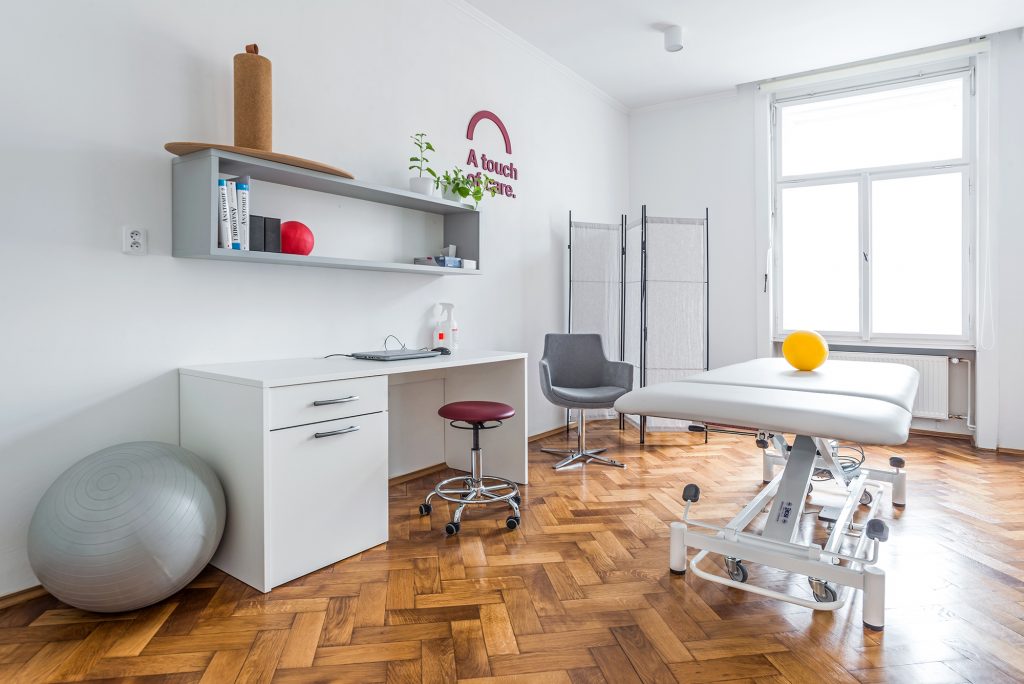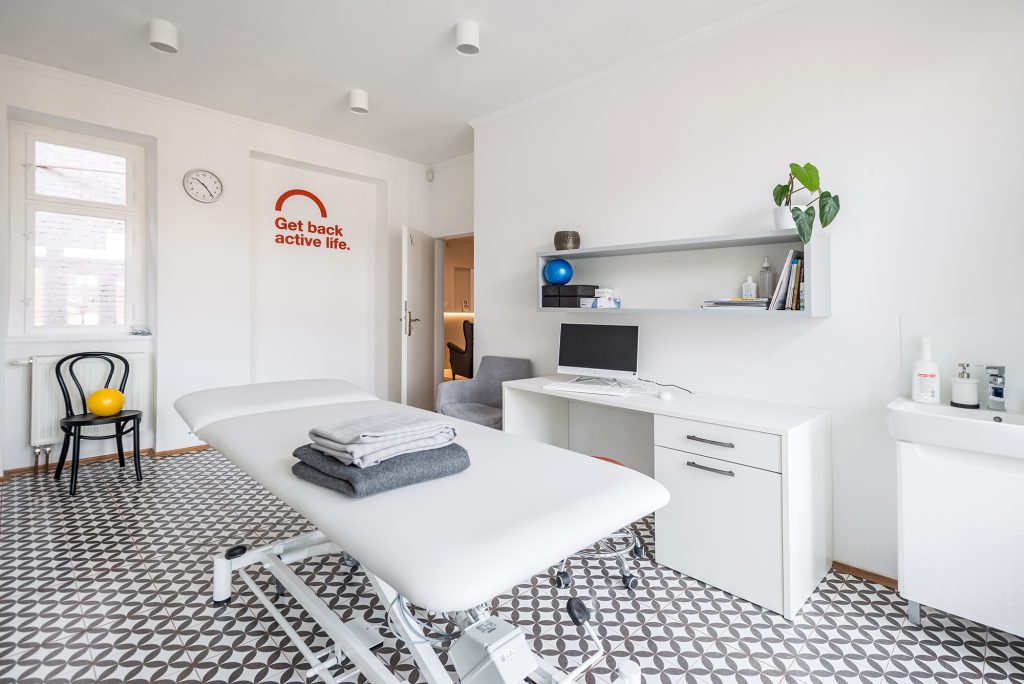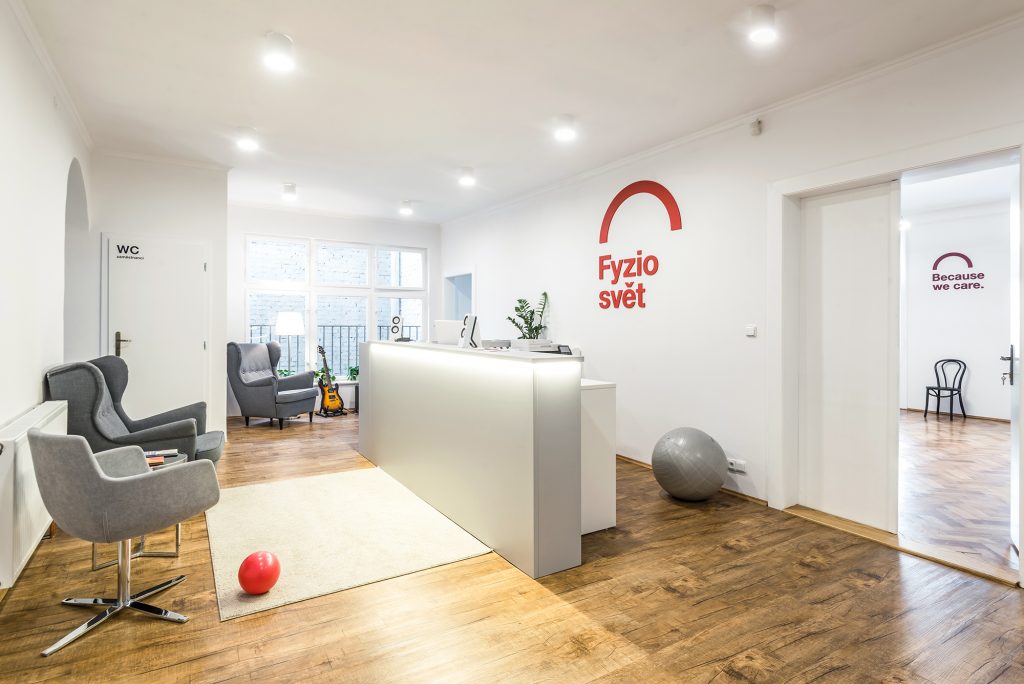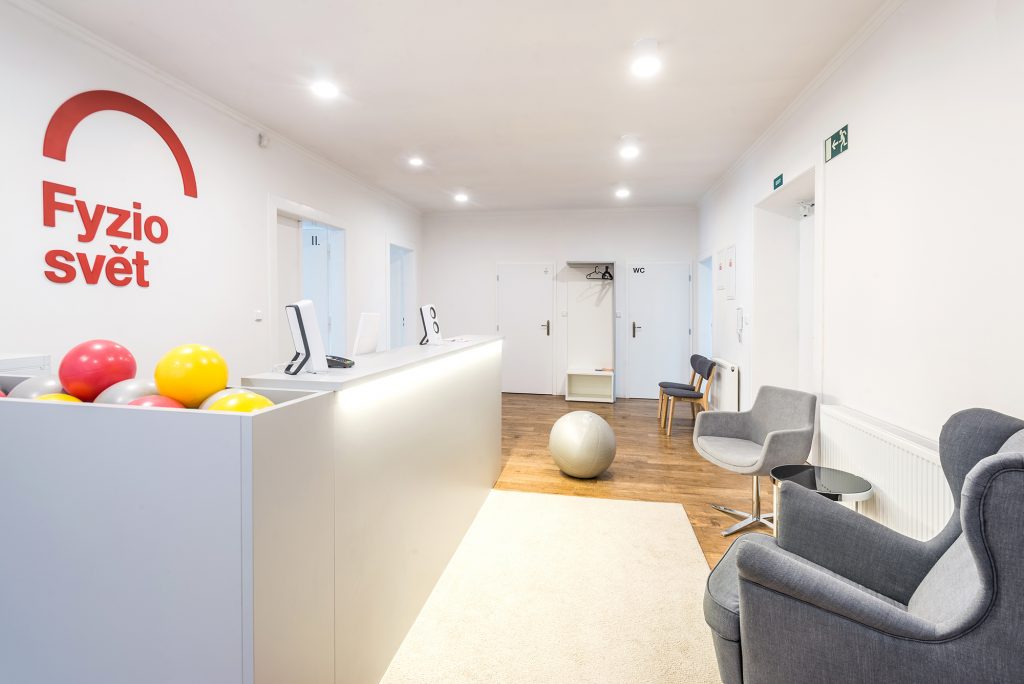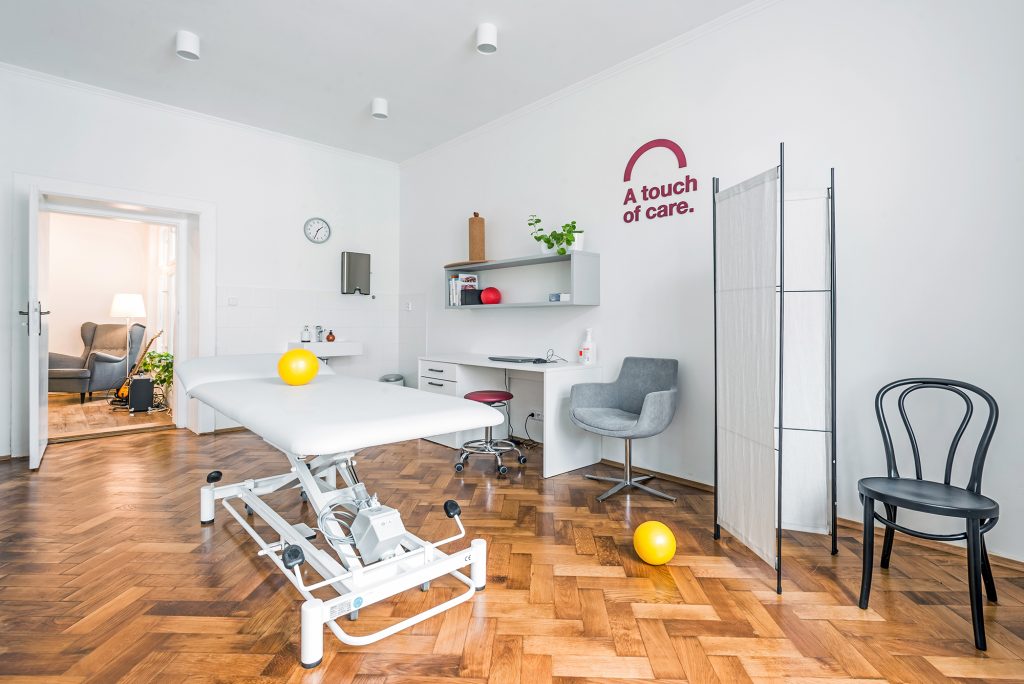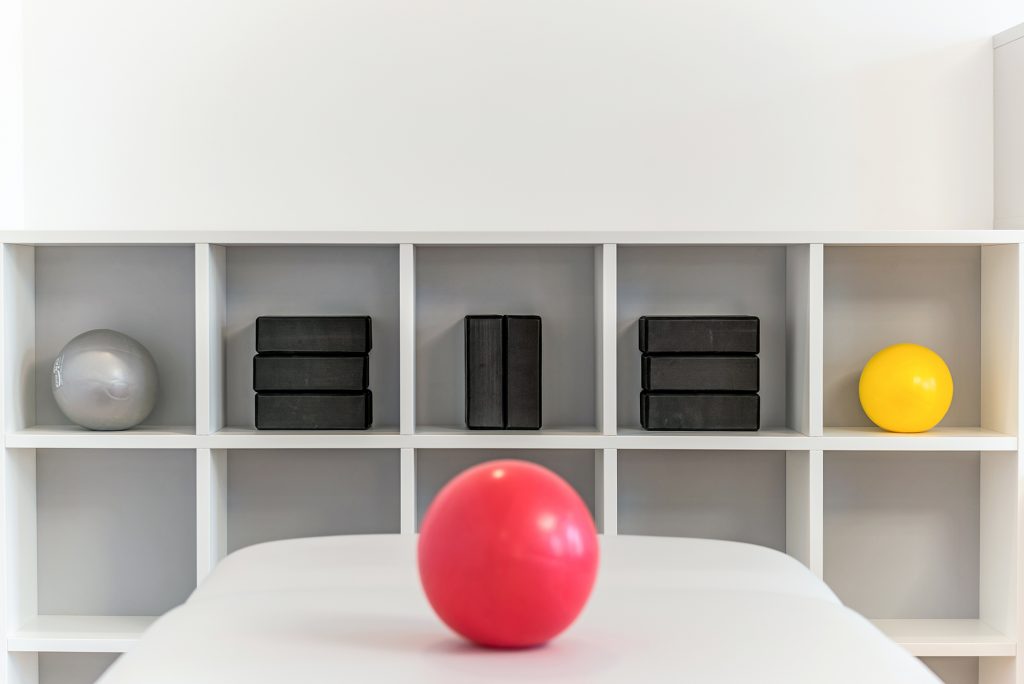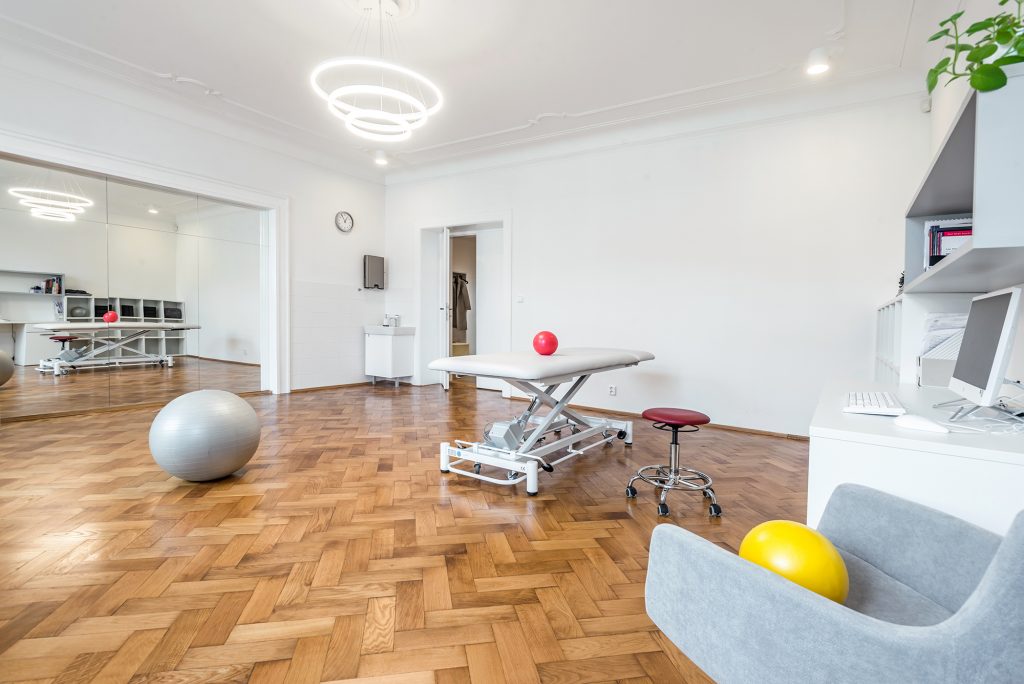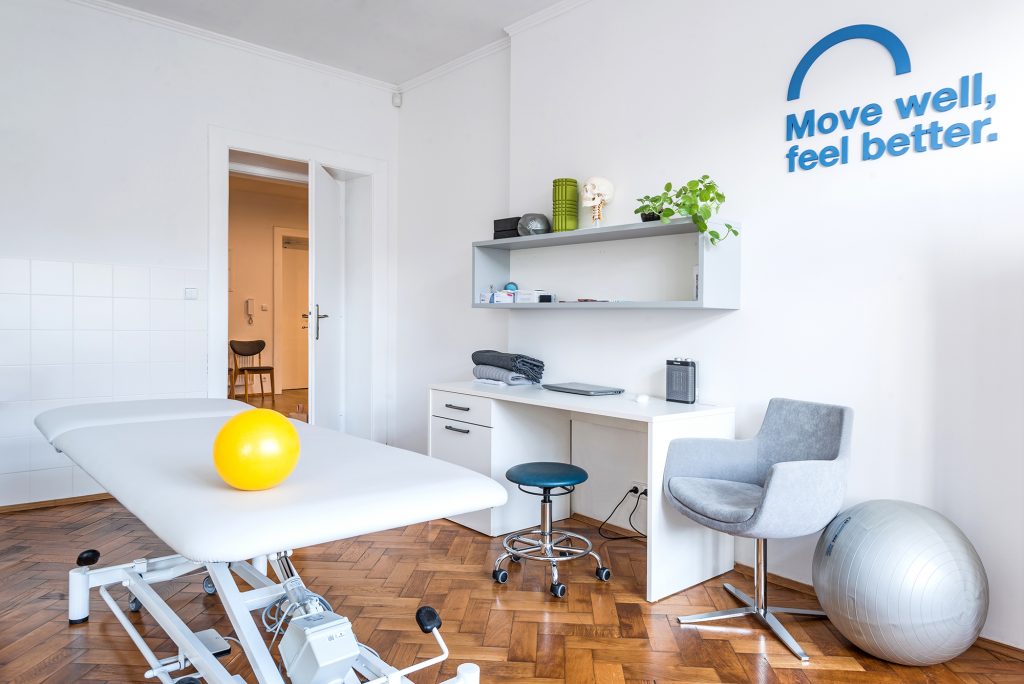7 Most Common Causes of Pain Under the Shoulder Blade
We often see clients who come to us with sharp pain or discomfort in the shoulder blade area. The treatment, however, depends on the root cause of your pain. Let’s look together at the possible reasons for shoulder blade pain. Based on the cause, we choose different treatment methods that can help.
1. Thoracic Spine Blockage
You wake up feeling fresh and rested with no pain. You head to work, sit at your desk, and as the day goes on, that familiar pain around the shoulder blades starts to return. It might turn into a burning or pulling sensation, so intense that sitting still becomes unbearable. Stretching only offers brief relief. On some days, headaches and neck pain join in. Does this sound familiar? It’s likely that poor ergonomic setup (e.g., unsuitable chair, desk height, or monitor positioning), poor posture, or remaining in static positions for too long are causing a blockage in your thoracic spine, overloading nearby muscles and ligaments.
Cause of Thoracic Blockage:
- Poor posture (rounded back)
- Lack of movement (prolonged sitting)
- Excessive load (heavy backpack, handbag, or gym workouts)
- Ignoring compensation strategies like rest days or stretching
Symptoms of Thoracic Blockage: A thoracic blockage typically feels like a dull ache or pressure between the shoulder blades, sometimes radiating more to one side. There’s also a feeling of stiffness in the chest and limited mobility.
Treatment: The good news is we can quickly provide relief using mobilization techniques and trigger point release. However, if it’s a chronic issue, the pain may return. Long-term relief requires addressing the causes and incorporating rehab exercises to restore movement and prevent pain recurrence.
2. Rib Blockage
Rib blockages are among the most common body blockages, but they can be tricky to diagnose due to their varied symptoms. Rib blockages can feel like a single painful spot or radiate along the rib. They can even mimic conditions such as toothache (3rd rib), heart attack (4th rib), or digestive problems (6th rib). It’s common for several ribs on one side to be blocked, with overlapping symptoms.
Causes: Rib blockages often result from physically demanding tasks or poorly coordinated movements, such as chopping wood, clearing snow, raking leaves, or washing windows. Sports involving “overhead” movements like tennis, golf, or volleyball can also cause rib blockages.
Symptoms: A blockage of the 4th rib is most associated with shoulder blade pain. The pain might also extend to the shoulder, despite the shoulder being unaffected, as the rib blockage radiates to the front. Breathing difficulties and pain during inhalation are common, and in combination with a thoracic spine blockage, an acute “stuck” sensation may occur with sharp, radiating chest pain.
Treatment: A skilled physiotherapist can identify which rib is blocked and treat it by releasing surrounding tissue and mobilizing all blocked joints. Afterward, a dull ache may linger but will fade within two days. Kinesiology tape can help relieve pressure.
3. Muscle Overload and Trigger Points
Trigger points, or “muscle knots,” are areas of muscle tension that can feel like small lumps and are a common cause of muscle pain. The muscles most associated with discomfort around and under the shoulder blade include the levator scapulae, rhomboids, subscapularis, serratus posterior superior, latissimus dorsi, and erector spinae.
Causes of Trigger Points:
- Prolonged poor posture (e.g., working on a laptop or holding a phone between your shoulder and ear)
- Incorrect support while sitting (no proper back, headrest, or armrests)
- Carrying a heavy bag on one shoulder
- Stress-induced shoulder tension
- Overexertion from a new exercise program or physical activity
Symptoms: Trigger points are often felt as sharp, localized pain, which intensifies when the area is pressed. Pain can also radiate to other areas, limiting muscle movement.
Treatment: Manual techniques are often used to treat trigger points, sometimes applying direct pressure. Dry needling may also be effective. After releasing the muscle, it’s essential to reintroduce movement to prevent recurrence.
4. Fascial Tension and Pain Under the Shoulder Blade
Fascia is a thin, connective tissue that surrounds every organ, blood vessel, bone, nerve fiber, and muscle. Healthy fascia is smooth and flexible, but it can become stiff or sticky, restricting movement and leading to pain. This is known as fascial adhesion or even fascial inflammation (fasciitis).
Causes:
- Lack of movement
- Repetitive motions that overwork one area of the body
- Inflammation or injury
Symptoms: Fascial pain tends to improve with movement and responds well to heat, unlike muscle or joint pain which worsens with activity. Over time, fascial tension can affect the surrounding muscles, causing trigger points and further pain.
Treatment: The goal is to reduce pain and release tension in the fascia and muscle fibers. You can try heating the area, practicing yoga, or using a foam roller. If these self-care methods don’t help, a professional specializing in fascial therapy can manually release the tension.
5. Breathing as a Source of Tension
Breathing is a natural process that normally requires no conscious effort. However, shallow breathing or inefficient diaphragm function can strain muscles in the neck, shoulders, and chest, leading to pain.
Symptoms of Incorrect Breathing: Sharp pain, often on the front or back of the chest, worsens with deep breaths. Other signs include tightness in the chest, rib tenderness, and tingling in the arms.
Treatment: Soft tissue techniques and mobilizations can relieve the overloaded muscles and release the rib cage. Long-term, it’s crucial to retrain breathing patterns and engage the diaphragm correctly.
6. Internal Organs and Pain Under the Shoulder Blade
Internal organ issues can sometimes manifest as pain in distant parts of the body, including the shoulder blade area. For example, liver, gallbladder, stomach, or heart problems can cause pain between the shoulder blades.
When to Seek Medical Help: If pain is accompanied by digestive issues, nausea, unexplained weight loss, or chronic fatigue, it’s essential to consult a doctor. If the pain is sudden, severe, and includes chest pain and shortness of breath, seek emergency care as it may be related to heart problems.
Treatment: Visceral therapy, a gentle manual technique, can support organ function and reduce referred pain.
7. Cervical Spine and Shoulder Blade Pain
Neck problems often cause pain around the shoulder blades, especially with today’s sedentary lifestyle and stress. Overloading the neck’s joints or discs can lead to trigger points in the neck muscles, which radiate pain to the shoulder blades.
Symptoms: Pain along the edge of the shoulder blade, worsened by neck movement, is common.
Treatment: Rest, gentle traction, and muscle release techniques are recommended. Adjusting daily activities and posture can help prevent recurrence.
5 Tips for Relieving Shoulder Blade Pain:
- Try gentle exercise: Move slowly, stretch, and don’t forget to breathe. Sometimes pain eases with movement.
- Take a break: If the pain is linked to a specific movement, give yourself a 48-hour rest period.
- Use heat or cold therapy: Cold reduces inflammation, while heat promotes blood flow and relaxes muscles.
- Consider over-the-counter medication: Anti-inflammatory pain relief can help, but don’t use it for more than 10-14 days.
- Get a massage: Use a tennis ball or foam roller to massage the area or ask a partner for help.
If none of these tips provide relief, it’s time to consult a professional. Your doctor or physiotherapist can assess your condition and guide you through a treatment plan.
